Physics Videos Roundup: 11 January 2013
Updated: 2013-01-11 15:24:43
What do poop, lightening and that last bit of tomato ketchup stuck in the bottom of your bottle have in common? They all feature in this week’s video round up! Is There Poop on the Moon? ft. Smarter Every Day We are all interested in space travel, but have you ever wondered how astronauts go [...]

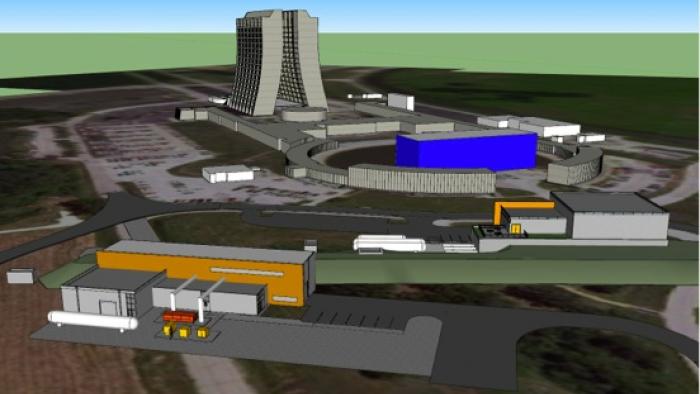 This spring, scientists at Fermi National Accelerator Laboratory will break ground on the buildings for a Muon Campus. The two initial experiments proposed for the campus draw on three decades of technological advances to turn muons into supersensitive probes for physics beyond the Standard Model.
This spring, scientists at Fermi National Accelerator Laboratory will break ground on the buildings for a Muon Campus. The two initial experiments proposed for the campus draw on three decades of technological advances to turn muons into supersensitive probes for physics beyond the Standard Model. There are two kinds of elementary particles in the universe: bosons and fermions. Bosons don’t mind sitting on top of each other, sharing the same space. In principle, you could pile an infinite number of bosons into the tiniest bucket. Fermions, on the other hand, don’t share space: only a limited number of fermions would fit into the bucket.
Matter, as you might guess, is made of fermions, which stack to form three-dimensional structures. The force fields that bind fermions to each other are made of bosons. Bosons are the glue holding matter together.
There are two kinds of elementary particles in the universe: bosons and fermions. Bosons don’t mind sitting on top of each other, sharing the same space. In principle, you could pile an infinite number of bosons into the tiniest bucket. Fermions, on the other hand, don’t share space: only a limited number of fermions would fit into the bucket.
Matter, as you might guess, is made of fermions, which stack to form three-dimensional structures. The force fields that bind fermions to each other are made of bosons. Bosons are the glue holding matter together.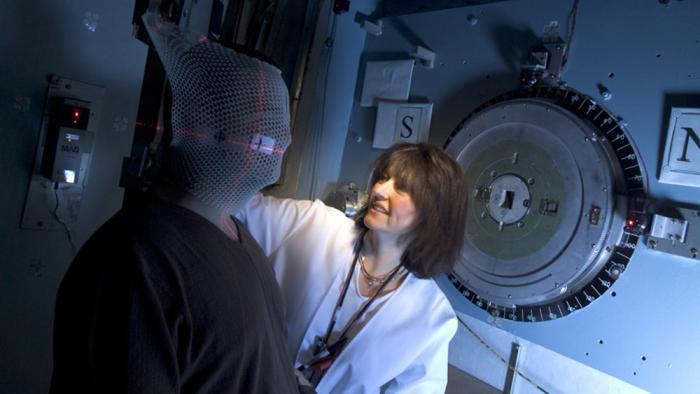 Amid the forest of wires and machines in Fermilab's Linac Gallery is a small, windowless room accessible only through a sliding steel door. With wood-paneled walls and a couple of white, synthetic orchids in full bloom, the room seems like it belongs in a home from the 1960s and not among the complex technology of a national accelerator laboratory.
Amid the forest of wires and machines in Fermilab's Linac Gallery is a small, windowless room accessible only through a sliding steel door. With wood-paneled walls and a couple of white, synthetic orchids in full bloom, the room seems like it belongs in a home from the 1960s and not among the complex technology of a national accelerator laboratory. This is quite the time in particle physics. Some of the most exciting discoveries in a decade have been made over the past year, and the coming years promise new endeavors and new findings.
This is quite the time in particle physics. Some of the most exciting discoveries in a decade have been made over the past year, and the coming years promise new endeavors and new findings.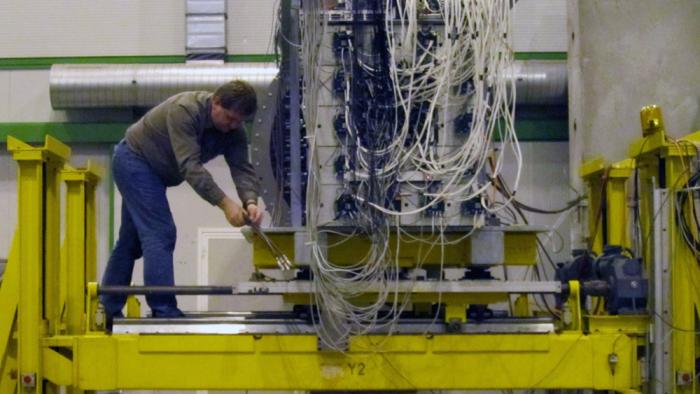 A new partnership between scientists from US institutions and CERN could improve results from neutrino experiments around the world. The scientists hope to use equipment at CERN to gain a more precise understanding of the process of creating a neutrino beam.
A new partnership between scientists from US institutions and CERN could improve results from neutrino experiments around the world. The scientists hope to use equipment at CERN to gain a more precise understanding of the process of creating a neutrino beam.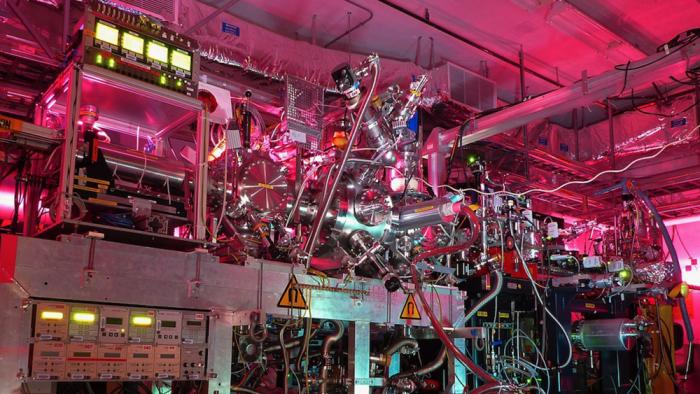 Space telescopes have greatly advanced our understanding of the universe, but they have also surfaced some new and puzzling problems. Recently scientists gained insight into a mismatch between theory and observation uncovered by space telescope research by using a ground-based X-ray technology that grew out of particle physics.
Space telescopes have greatly advanced our understanding of the universe, but they have also surfaced some new and puzzling problems. Recently scientists gained insight into a mismatch between theory and observation uncovered by space telescope research by using a ground-based X-ray technology that grew out of particle physics. The Long-Baseline Neutrino Experiment achieved a significant milestone this week.
The US Department of Energy on Monday granted Critical Decision 1 approval to the first phase of LBNE, which includes construction of a beamline at Fermilab and a near-surface far detector at the Sanford Lab in Lead, South Dakota. One of the largest proposed neutrino experiments in the world, LBNE will send neutrinos generated at Fermilab through 800 miles of earth to the South Dakota detector.
The Long-Baseline Neutrino Experiment achieved a significant milestone this week.
The US Department of Energy on Monday granted Critical Decision 1 approval to the first phase of LBNE, which includes construction of a beamline at Fermilab and a near-surface far detector at the Sanford Lab in Lead, South Dakota. One of the largest proposed neutrino experiments in the world, LBNE will send neutrinos generated at Fermilab through 800 miles of earth to the South Dakota detector. Many have speculated about which theorists the Nobel Committee might honor for the prediction of the Higgs boson, but it was the experimentalists involved in the search for the particle who received recognition today.
Many have speculated about which theorists the Nobel Committee might honor for the prediction of the Higgs boson, but it was the experimentalists involved in the search for the particle who received recognition today.  Decay channels are the possible transformations a particle can undergo as it decays.
When a particle decays, it does not break into smaller bits; its energy does. Even fundamental particles—so named because they are the basic building blocks of matter that cannot be broken into smaller parts—can decay. Many particles in the Standard Model exist for only a limited time before decaying.
When a particle decays, it transforms into collections of less massive particles whose combined energy adds up to the energy of the original particle.
Decay channels are the possible transformations a particle can undergo as it decays.
When a particle decays, it does not break into smaller bits; its energy does. Even fundamental particles—so named because they are the basic building blocks of matter that cannot be broken into smaller parts—can decay. Many particles in the Standard Model exist for only a limited time before decaying.
When a particle decays, it transforms into collections of less massive particles whose combined energy adds up to the energy of the original particle.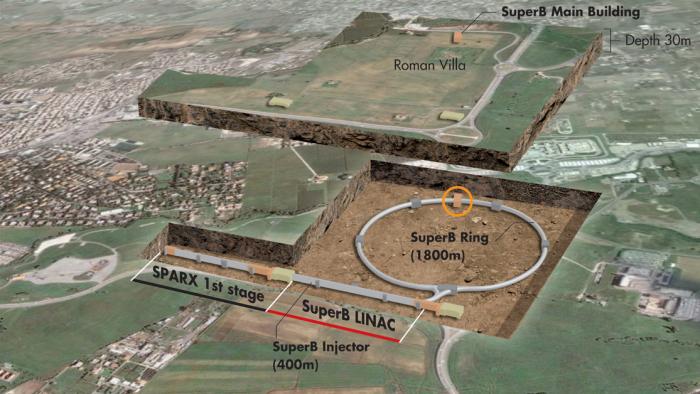 In its infancy, the universe was made of nearly equal parts matter and antimatter. Yet matter overwhelmingly dominates today. Scientists design experiments that examine the conditions of the early universe to investigate why.
An international collaboration of scientists proposed to build one such project, a particle collider that would specialize in creating B mesons, in Italy over the next several years. However, last week the Italian government withdrew funding for the project, citing the country's weakened economic state.
In its infancy, the universe was made of nearly equal parts matter and antimatter. Yet matter overwhelmingly dominates today. Scientists design experiments that examine the conditions of the early universe to investigate why.
An international collaboration of scientists proposed to build one such project, a particle collider that would specialize in creating B mesons, in Italy over the next several years. However, last week the Italian government withdrew funding for the project, citing the country's weakened economic state.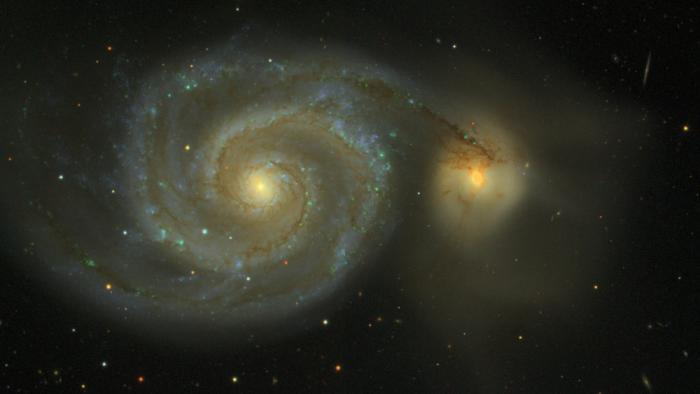 About 5 billion years ago the universe underwent a crucial transition. The gravitational tug that pulled together the matter in the universe was overwhelmed by a different, repulsive phenomenon. As a result, the universe began to expand at an accelerating rate.
Scientists have given that phenomenon a name: dark energy. However, they can say with confidence only what it does, not what it is, where it comes from, or why it’s pushing galaxies apart at an ever more rapid speed.
About 5 billion years ago the universe underwent a crucial transition. The gravitational tug that pulled together the matter in the universe was overwhelmed by a different, repulsive phenomenon. As a result, the universe began to expand at an accelerating rate.
Scientists have given that phenomenon a name: dark energy. However, they can say with confidence only what it does, not what it is, where it comes from, or why it’s pushing galaxies apart at an ever more rapid speed.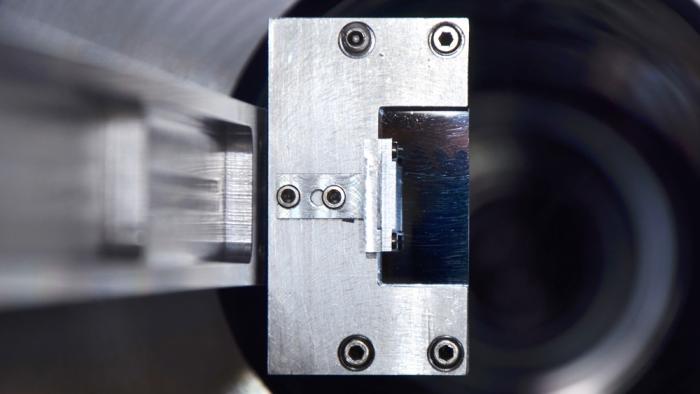 A new system that would use bent crystals to remove errant particles in the Large Hadron Collider passed a major test last month by surviving a barrage of protons at high energy.
A new system that would use bent crystals to remove errant particles in the Large Hadron Collider passed a major test last month by surviving a barrage of protons at high energy.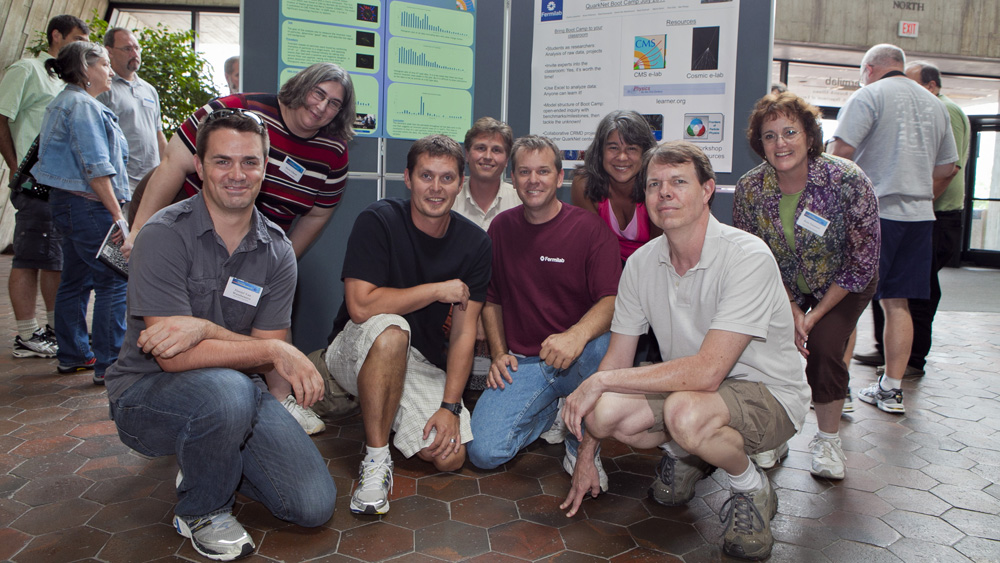 When Virginia high school teacher Deborah Roudebush teaches physics, she doesn't exactly follow the book.
In one of her more memorable lessons, she gives her students a stopwatch and a ruler and sets a toy pig flying around the classroom. The students must use their tools to determine the speed of the pig in two different ways.
"There's no set value for pig speed," Roudebush says. "I'm teaching them to develop methods and test those methods. That's how scientists do it."
When Virginia high school teacher Deborah Roudebush teaches physics, she doesn't exactly follow the book.
In one of her more memorable lessons, she gives her students a stopwatch and a ruler and sets a toy pig flying around the classroom. The students must use their tools to determine the speed of the pig in two different ways.
"There's no set value for pig speed," Roudebush says. "I'm teaching them to develop methods and test those methods. That's how scientists do it."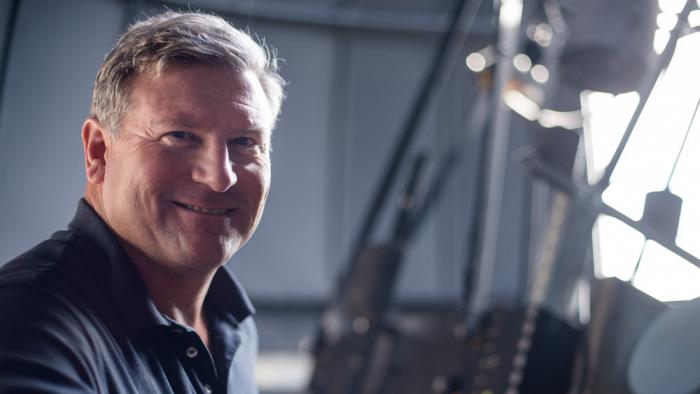 In its four years in orbit, the Fermi Gamma-ray Space Telescope has found a cosmos teeming with points of gamma-ray light. Newly discovered gamma-ray sources run the gamut from the expected, like supernova remnants and active galactic nuclei, to the surprising, like gamma rays from the sun or Earth-bound lightning strikes.
In its four years in orbit, the Fermi Gamma-ray Space Telescope has found a cosmos teeming with points of gamma-ray light. Newly discovered gamma-ray sources run the gamut from the expected, like supernova remnants and active galactic nuclei, to the surprising, like gamma rays from the sun or Earth-bound lightning strikes.